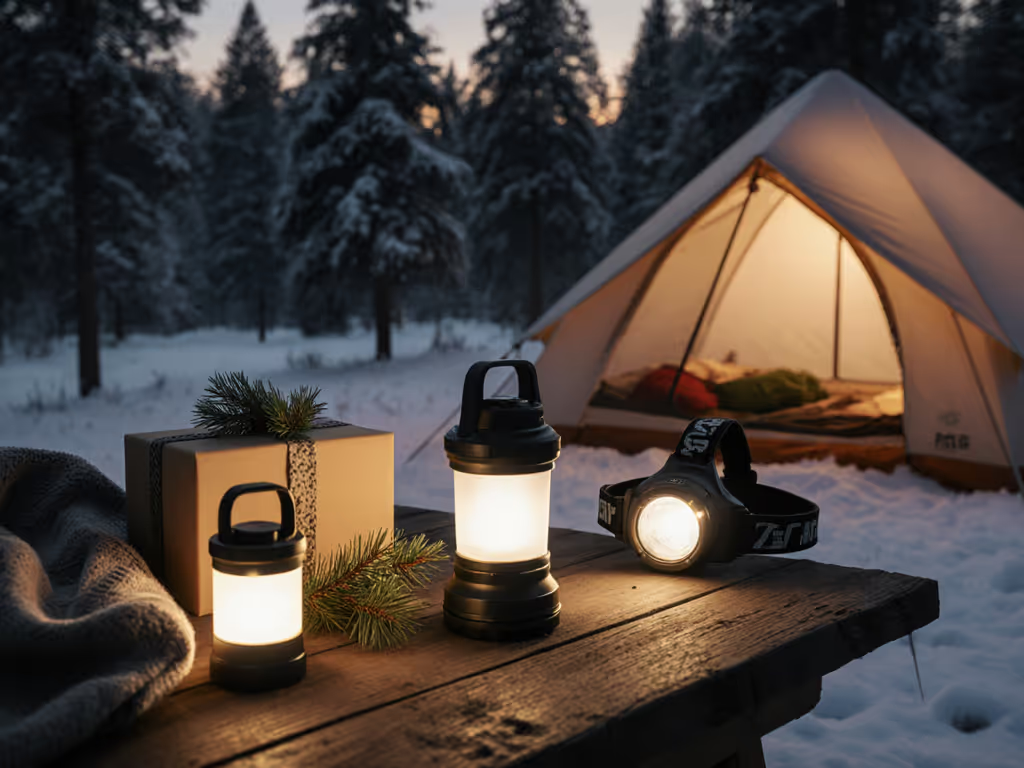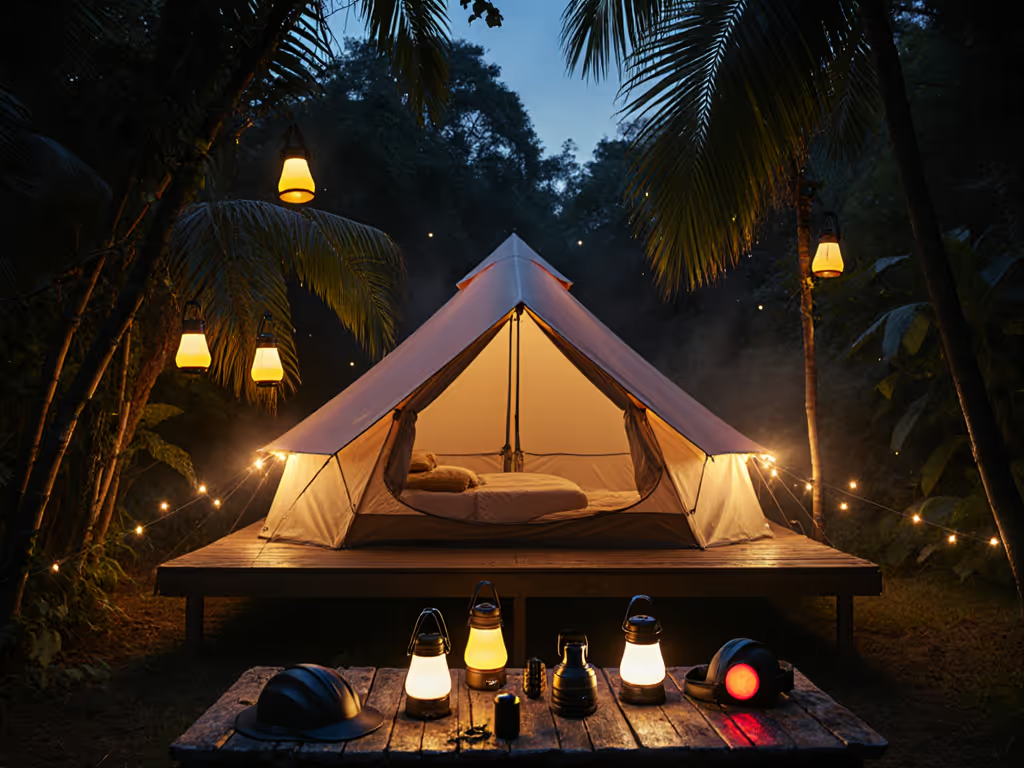
REI Festival Camping Lights: Safe & Visible
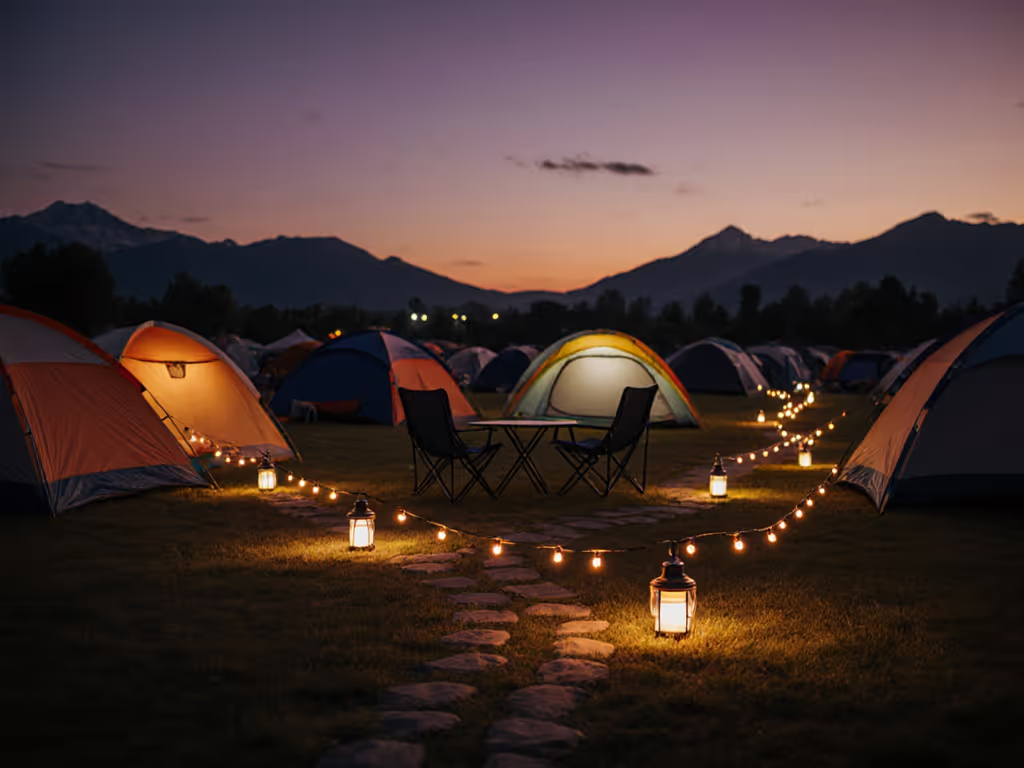
When the bass drops and the crowd shifts toward the main stage, your music festival lighting setup becomes your home base in the sea of humanity. Choosing the right REI camping lights transforms your festival camp from a confusing tangle of tents into a welcoming sanctuary where friends can regroup, stories can unfold, and rest comes easily. As someone who has spent years studying how light affects human comfort and community, I've learned that the best music festival lighting does more than illuminate, it creates safety without sacrifice, visibility without violence to the night.
Gentle light makes every voice easier to hear.
Why Festival Lighting Requires Thoughtful Design
Festival camping presents unique challenges that differ from standard backcountry or car camping. Unlike a dispersed campsite in national forests, festival grounds pack people shoulder-to-shoulder, creating lighting dilemmas that demand both technical precision and social awareness. The stakes are higher: harsh beams can disrupt neighbors' hard-earned festival rest, while inadequate lighting creates safety hazards in crowded conditions where unfamiliar feet navigate dark terrain long after quiet hours.
Most festival attendees don't realize how dramatically lighting quality affects their experience. Cool-white LEDs with high color temperatures (5000K+) not only disrupt the natural melatonin production needed for quality rest, but they also destroy night vision, making it harder to navigate surrounding campsites. This creates a vicious cycle where people increase brightness to compensate for poor vision, further disturbing neighbors and obscuring the already limited starlight.
I remember one family festival where our toddler kept waking as harsh overhead lights signaled "playtime" instead of bedtime. It wasn't until I switched to warmer tones and strategically placed shielded markers that we found rhythm. That night taught me what I now consider foundational: light should serve people and place, never dominate them.
Understanding the Lighting Science Behind Festival Comfort
To create truly functional festival lighting, we need to understand three key elements that most manufacturers gloss over:
Color Temperature (CCT)
Measured in Kelvin (K), color temperature determines whether light appears warm (yellow-red) or cool (blue-white). For evening and nighttime use, camp site lighting in the 2700K-3000K range aligns with our circadian biology, supporting melatonin production while still providing adequate visibility. Above 3500K, light begins suppressing melatonin and disrupting sleep cycles, problematic when you need to recharge for another day of music.
Color Rendering Index (CRI)
CRI measures how accurately a light source reveals colors compared to natural light. A CRI above 90 means you can distinguish subtle color differences, critical when sorting festival gear, applying first aid, or identifying your tent among dozens of similar structures. Many budget festival lights sacrifice CRI for brightness, creating confusing color distortions in low-light conditions.
Glare Control
This refers to how a light's optics direct illumination where it's needed while minimizing spill. Properly designed fixtures use baffles, diffusers, or directional placement to keep light focused on pathways and gathering areas rather than broadcasting indiscriminately into neighboring campsites.
Top REI Festival Lighting Solutions Compared
After analyzing dozens of festival camp setups (from boutique music festivals to massive multi-day events), I've identified several standout options that balance performance, etiquette, and practicality. Each addresses specific challenges while respecting the delicate ecosystem of festival camping.
Nite Ize Radiant RL2 Rechargeable Lantern
This compact lantern has become my festival essential for its thoughtful balance of function and consideration. The Radiant RL2 provides multiple brightness levels with a dedicated amber setting that preserves night vision without sacrificing visibility. The rechargeable battery lasts through multi-day events even with moderate use, and the clever lockout feature prevents accidental activation in your pack.
What truly sets it apart is the fabric storage bag that doubles as a diffuser, softening the light output to create a warm, welcoming glow rather than a harsh spotlight. Reviewers consistently mention how the amber mode transformed their late-night return to camp, making navigation safe without disturbing sleepers.
This lantern exemplifies how proper diffusion and CCT selection create festival camp safety without compromising ambiance. The amber mode in particular deserves attention: it's not merely "dim" light, but light specifically tuned to wavelengths least disruptive to night vision and melatonin production.
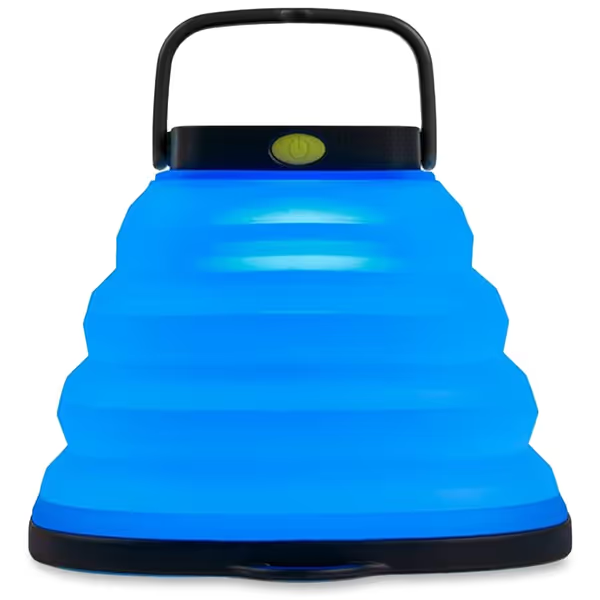
Goal Zero Crush Light Chroma Lantern
Goal Zero Crush Light Chroma
For those seeking versatile lighting that can adapt to multiple festival scenarios, the Goal Zero Crush Light Chroma offers surprising functionality in an ultra-compact package. This collapsible lantern provides both white light (3000K) and six color options, though for festival purposes, I recommend sticking with the warmer white settings for primary illumination.
The Crush Light's brilliance lies in its portability, it folds flat to slip into any pocket, making it perfect for creating high-visibility tent markers that won't weigh down your festival pack. Strategically place these around your camp perimeter to create subtle boundaries that guide returning friends without overwhelming the night.
One crucial note: while the multicolor options might seem appealing for festival flair, the colored modes often compromise CRI and create visual confusion. For safety and practicality, reserve color effects for special moments rather than primary camp lighting.
Designing Your Festival Lighting System
Rather than selecting a single "brightest" light, consider building a layered lighting system that addresses different needs throughout your festival experience:
Entrance and Pathway Lighting
This is where festival camp safety begins. Create a clear, low-glare pathway to your tent using shielded ground markers that illuminate only the path itself, not the entire campsite. Options include:
- Low-profile LED path lights
- Short sections of string lights hung just above ground level
- Strategically placed lanterns with directional diffusion
The key is maintaining foot-level visibility while keeping light directed downward, never upward where it creates glare for neighbors. For a practical comparison focused on safe navigation between tents, read our pathway vs string lights guide.
Gathering Area Lighting
Your central camp area needs sufficient illumination for socializing without becoming a light pollution source. This is where lanterns with adjustable brightness and proper diffusion shine. Look for:
- Shielded or fabric-diffused lanterns
- Minimum 90 CRI for accurate color recognition
- Warm color temperature (2700K-3000K)
Tent and Quiet Area Lighting
Inside or immediately outside sleeping areas, lighting must prioritize minimal disruption. Small, shielded lights with dedicated low settings work best here. Consider:
- Headlamps with red-light modes for quiet movement
- Small lanterns with deep dimming capabilities
- Motion-activated pathway markers that only illuminate when needed
light is hospitality
This isn't just philosophy, it's practical design. When your lighting respects neighboring campsites while creating welcoming visibility, you're not just solving a functional problem; you're extending hospitality through thoughtful illumination.
Creating Your Festival Lighting Plan
Before your next festival, consider these practical steps to build a lighting system that supports both safety and community:
Map Your Lighting Needs
Walk through your typical festival evening in your mind:
- When do you return to camp after dark?
- Who might be sleeping when others return?
- Where are potential trip hazards around your tent?
- How close are neighboring camps?
Layer Your Lighting
Build a system with multiple components that serve specific purposes:
- Perimeter markers for overall camp identification (low brightness, warm tone)
- Pathway lighting for safe navigation (ground-level, directional)
- Gathering area for socializing (diffused, adjustable brightness)
- Personal lighting for individual movement (focused, with red-mode options)
Test Before You Fest
Charge all lights and test your setup at home after dusk. Verify:
- Actual brightness levels (manufacturer specs often exaggerate)
- True color temperature (does it look warm or cool in practice?)
- Battery life at your intended brightness setting
- Ease of operation in low-light conditions
The Social Contract of Festival Lighting
At its heart, thoughtful festival lighting represents a social contract between neighbors in temporary community. Tent camping lights that respect darkness aren't just about personal comfort, they're about acknowledging we share the night. The most successful festival camps I've observed aren't the brightest, but those where light serves conversation, safety, and rest in equal measure.
When you arrive at your next festival campsite as darkness falls, consider how your lighting decisions affect those around you. Could your bright white lantern be disrupting someone's hard-earned sleep after a long day? Are your perimeter lights creating unnecessary light pollution that obscures the stars everyone paid to experience?
The beauty of festival camping lies in this delicate balance, between connection and solitude, celebration and rest, visibility and darkness. By choosing lighting that serves rather than dominates, we create spaces where everyone can find their rhythm under the open sky.
Finding Your Festival Lighting Balance
The right festival lighting setup transforms your camp from a mere stopping point into a destination, a place where friends gather, stories flow, and weary festival-goers find genuine rest. As you plan your next event, consider lighting not as an afterthought but as fundamental infrastructure for the temporary community you're helping to build.
Remember that light is hospitality. When we illuminate thoughtfully, we don't just mark our space, we extend welcome without words. In the crowded, chaotic beauty of festival camping, that quiet consideration might be the most valuable contribution you make.
For those interested in digging deeper into lighting design principles for outdoor spaces, REI's expert advice section offers detailed guidance on selecting lights that balance performance with environmental consideration. Exploring these resources before your next festival can help you build a lighting system that serves both your needs and the community around you.
Related Articles



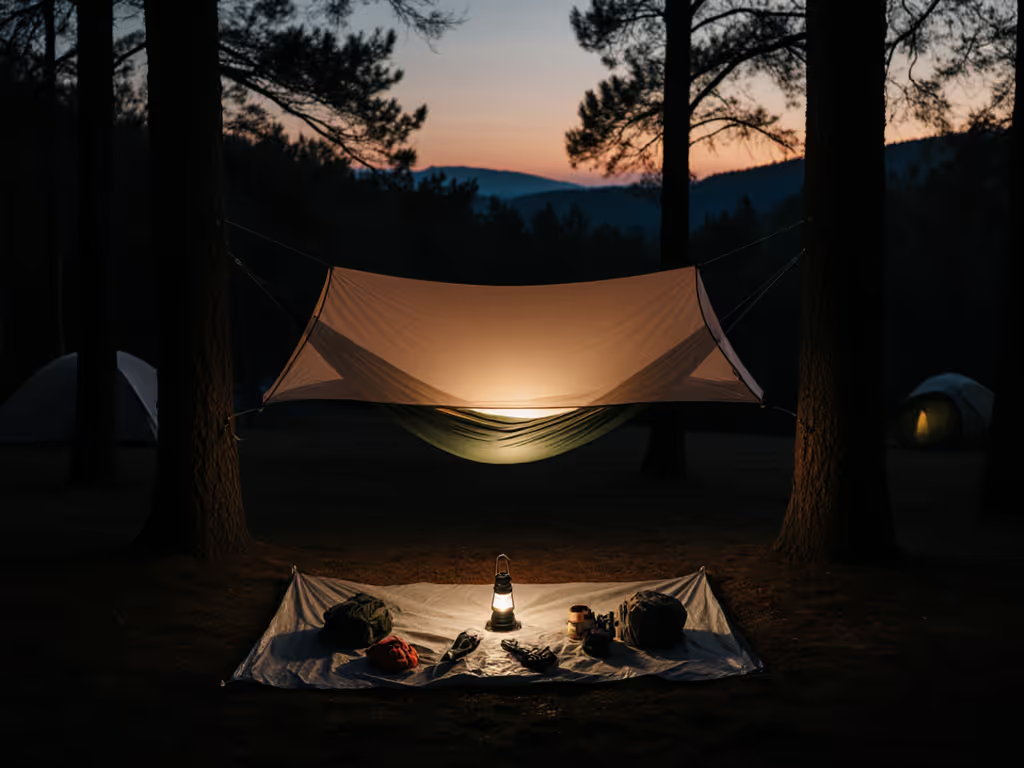
Hammock Lighting Solutions: Hang Without Hassle
Build a minimalist, neighbor-friendly hammock lighting system that uses the rainfly as a diffuser and a dimmable lantern, with precise placement and a three-layer plan. Get a straightforward power budget and gear picks to cut glare, save weight, and avoid battery anxiety on multi-night trips.
